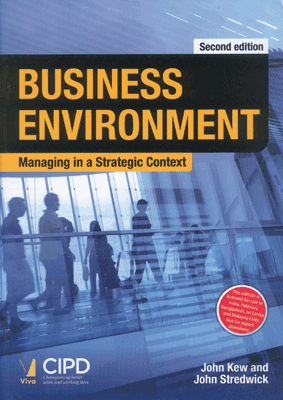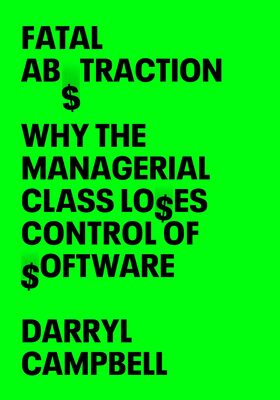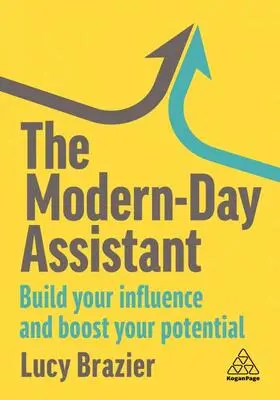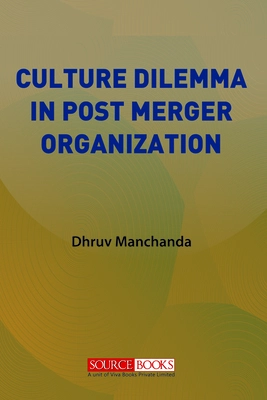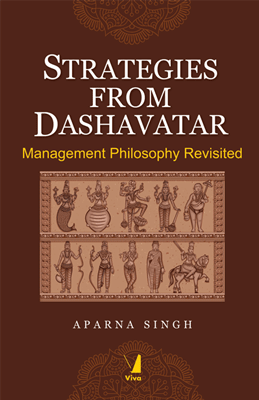Business Environment, 2/e
Business Environment, 2/e
Managing in a Strategic Context
₹805.50 ₹895.00 Save: ₹89.50 (10%)
Go to cartISBN: 9789385919107
Bind: Paperback
Year: 2016
Pages: 424
Size: 6.5 x 9.5 Inch
Publisher: Chartered Institute of Personnel and Development
Published in India by: Viva Books
Exclusive Distributors: Viva Books
Sales Territory: India, Nepal, Pakistan, Bangladesh, Sri Lanka
"This second edition does not read like a typically dry textbook but is informative, engaging, and relevant to the work environment, incorporating current events and contemporary business issues in a meaningful way, and relating these to theoretical models which are thoroughly but not heavily presented:"
—Stephen Millard, Senior Teaching Fellow, School of Business and Management, Buckinghamshire New University
"The text is written in a lively style which will keep the interest of undergraduates. The content is excellent and the activities, which were generally well designed, help to consolidate ideas that have been raised in the chapters. I would not hesitate to recommend the text to students:" (on 1st edition)
—Cheryl Lim, Visiting Lecturer at London Metropolitan University
"The text demonstrates a balance between theory and practice lacking in many of the texts that are currently available in the marketplace. The examples, activities and case studies used by the authors are wide-ranging. For students studying the Business Environment, this text has a sound structure and meets the theoretical requirements. Additionally, the practical nature of the exercises/examples meet the needs of modules - particularly in terms of developing knowledge, understanding and core skills in students:" (on 1st edition)
—Dr David Lal, Lecturer in International Business and Business Policy, Aberdeen Business School, The Robert Gordon University
Description:
Business Environment is ideal for students taking modules in the Business Environment or Business Context areas of an HR or business degree programme. It is written to cater for both undergraduate and postgraduate level modules. Presented and written in an easy-to-use format, for students with little or no prior knowledge of the subject area, the text enables students to gain key knowledge of the environmental influences - economic, social and legal - that are essential in developing an understanding of business strategy at every level. This fully revised and updated second edition includes:
- More international content addressing, for example, the needs of migrant workers
- New material including more on organisational environments and strategy
- A case study led approach with more real-world and international cases
- Full coverage of the PDS standards on the "Managing in a Strategic Business Context' module
- Lots of new research from the ClPD and elsewhere
Packed with features such as chapter objectives, student and seminar activities, self assessment questions, case studies, key learning points and further reading, this text is guaranteed to enhance any business student's learning experience. This text also provides access to a revised and improved companion website with additional exercises and tutor lecture notes.
Target Audience:
This book will be of immense use to students and academicians of Management.
Contents:
List of figures • List of tables • Preface to the second edition
Chapter 1: Organisations and their environments
Learning outcomes • What is the environment? • Analysing the environment • Why do we need to understand and manage the environment? • Tools for analysing the environment • SWOT and strategy • Criticisms of SWOT • E-V-R congruence • Managing the environment • Conclusions • Key learning points • Questions • Seminar activity: Activity holidays
Chapter 2: The competitive environment
Learning outcomes • Economic systems • The market economy • Mixed economies • Market structures • Perfect competition • Monopolistic competition • Monopoly • Oligopoly • Monopsony and bilateral monopoly • Competitive structure • Michael Porter's five forces model • Criticisms of five forces • Portfolio analysis • Boston matrix • Shell directional policy matrix • The public and voluntary sectors • HR implications of response to changes in the environment • Strategic responses • Conclusions • Key learning points • Questions • Trends to watch • Explore further • Seminar activity: Supermarkets: an oligopolistic industry
Chapter 3: The world economy
Learning outcomes • The European Union • The historical background to the European Union • The aims of the European Union • The institutions of the European Union • EU enlargement • The EU Constitution • The European Union and other regional blocs • International financial institutions • The Bretton Woods conference • The IMF • The World Bank • International trade and comparative advantage • The World Trade Organization (WTO) • The working of the WTO • Debt relief • Globalisation • Drivers of globalisation • Multinational and transnational corporations • The globalisation debate • Globalisation, growth and poverty • Multinationals and brands • Globalisation and the labour market • Conclusions • Key learning points • Questions • Trends to watch • Explore further • Seminar activity: Polish plumbers
Chapter 4: Government policy
Learning outcomes • Introduction • The legislative process in the United Kingdom and the European Union • The United Kingdom • The European Union • Informal influences on policy • Political parties • Pressure groups • The government and the economy • Some key definitions • Economic objectives • The tools of government policy • The link between unemployment and inflation • In terest rates • Central banks and interest rates • Public ownership, privatisation and PFI/PPP • Public ownership • Privatisation • Public interest companies • The Private Finance Initiative and public-private partnerships • Competitiveness • Productivity • Conclusions • Key learning points • Questions • Trends to watch • Explore further • Seminar activity: Economic development in India and China
Chapter 5: Regulation
Learning outcomes • Introduction • Legal contours • Legal concepts • Types of law • From where does the law originate? • The courts system • Law of contract • Regulating business and protecting the consumer • Controlling and enhancing competition • Consumer protection • Employment law • Sources of the employment contract • Employee rights • Benefits • Regulation of contracts through collective bargaining • Regulating health and safety • Introduction • Health and Safety at Work Act 1974 (HASAWA) • The Health and Safety Commission and Health and Safety Executive • Control of Substances Hazardous to Health Regulations (COSHH) 1988 • Regulations arising from European Union Directives • Reporting of Diseases and Dangerous Occurrences Regulations (RIDDOR) 1995 • Enforcing the law • Risk assessment • Occupational stress • Role of Human Resources • Implications of regulation • Industry regulators - privatised utilities • Industry regulation - financial services (FSA) and communications (Ofcom) • Regulation and the public sector • Regulation and other sectors • Codes of practice • Key learning points • Questions • Trends to watch
Chapter 6: Demography
Learning outcomes • Introduction • Demography: the facts • Population growth • Drivers of population change • Ethnicity of the population • Other demographic changes • Trends to watch - and the future? • Implications of demographic predictions • Implications for organisations • Implications for governments, especially the UK government • Implications for international society • The world's resources • Key learning points • Questions
Chapter 7: Social trends
Learning outcomes • Introduction • Class • Karl Marx • Max Weber • Socioeconomic classifications • Social mobility • Inequality • Poverty • Trends in employment • Changes in the industrial structure • The feminisation of the workforce • Work organisation • The flexible organisation • The future of the workplace • The psychological contract • Work-life balance • Equal opportunities and diversity • Trade unions • Conclusions • Key learning points • Questions • Trends to watch • Explore further • Seminar activity: Social mobility, education and the meritocracy
Chapter 8: Technology
Learning outcomes • Introduction • What's happening in technology • Patterns of technological development • Types of technological change • Information technology • Communication technologies • Transportation technologies • The Internet • Biotechnology and medical technologies • Artificial intelligence (AI) and robotics • The impact on business strategy, goods and services • Effects on business strategies and operations • Specific products • Effects on labour markets and Human Resources • Increase in temporary labour • Recruitment/selection processes • Teleworking • Call centres • Effect on the structure of HR operations • Knowledge management • Technology - the darker side • Gene therapy • Lettuce leaves • Shared HR services • The darker side of employment • Trends to watch - what of the future? • Key learning points • Questions
Chapter 9: Ethics, social responsibility and sustainability
Learning outcomes • Introduction • Ethics • Ethical principles • Ethical dilemmas • Whistleblowing • The Public Interest Disclosure Act 1998 • Professional ethics • Business ethics • Stakeholders • Values • Codes of ethics • Corporate governance • Corporate social responsibility • Sustainability • Corporate social responsibility and HR • Corporate social responsibility and the government • The bottom line • Conclusions • Key learning points • Questions • Trends to watch • Explore further • Seminar activity: Responsible tourism
Chapter 10: Strategic management
Learning outcomes • Introduction • What is strategic management? • Models of strategy • Corporate planning • Strategic management • The elements of strategic management • Strategic analysis • Gap analysis • Strategic choice • Strategic implementation • Strategic analysis • Vision, mission, values and objectives • The mission statement • Resource analysis • Strategic choice • Generic strategies • Selection of strategies • Evaluation of strategies • Suitability • Acceptability • Feasibility • Strategic option screening • Strategic implementation • Incremental and transformational change • Models of change • Managing change • Resistance to change • The role of HR in change management • Change leadership • Conclusions • Key learning points • Questions • Trends to watch • Explore further • Seminar activity: The Second World War
Chapter 11: Managing in a strategic business context • integrative case studies
Learning outcomes • Introduction • Strategy in the beer industry
Bibliography • Index
About the Authors:
John Kew is an educational consultant and has written flexible learning material for the ClPD's Professional Development Scheme.
John Stredwick is Senior Lecturer at University of Bedfordshire and has authored six books. He is Visiting Associate Professor at Webster University (US) based in Regents Park.
